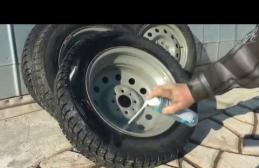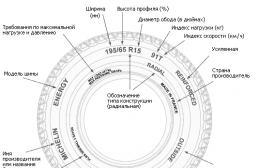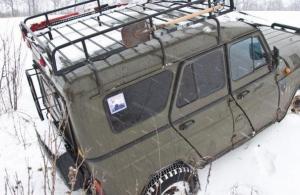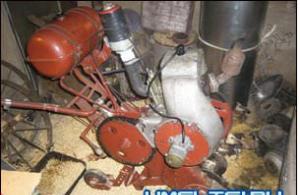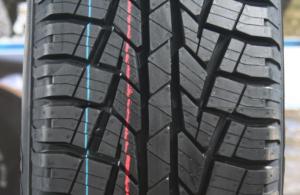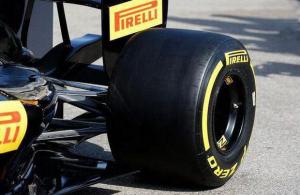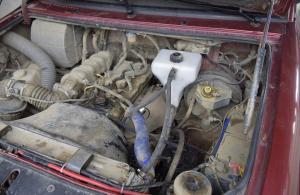V general outline device double wishbone suspension pretty simple. There are two levers, usually A-shaped, with the base of a triangle facing the wheel. The levers are fixed movably. Inner side lower arm attached to the subframe or, if the body is not load-bearing, to the frame, upper arm- to the body. By the outside the levers are movably connected to the rack carrying the wheel. In the case of the front suspension, the strut is swivel. There is a vibration damper between the levers elastic element which today usually consists of a spring and a telescopic shock absorber.
The greatest influence on the handling of a car equipped with such a suspension is exerted by the mutual arrangement of the levers and the ratio of their lengths. Short levers of the same length are practically not found, since if they are available, when the car overcomes unevenness, the wheel will move not only in the vertical, but also in the horizontal direction. In other words, the track will change, which is an extremely undesirable effect from the point of view of handling. As a result, the upper arm is usually 1.5 to 1.8 times shorter than the lower arm. This makes it possible to achieve such a change in the camber of the wheels so that the wheel external to the center of rotation (as the more loaded one) always remains perpendicular to the road surface, which in turn means the maximum ability to transfer the side load.
By the way, the MacPherson strut, which we talked about last time, can be considered an inverted "two-lever". No lateral displacement top end The strut, typical of the MacPherson strut, is virtually equivalent to the very long upper arm in a double wishbone suspension. Now the nature of the kinematic imperfections of the suspension on the guide strut becomes clear.

Other advantages of a double wishbone suspension are better noise insulation and transfer of less loads to the body, relative ease of repair.
There are also disadvantages. The cost of designing and maintaining such a suspension is higher than that of MacPherson, because the correct adjustment of the "two-lever" is a rather complex geometric task. In addition, the horizontal orientation of the suspension "eats up" space under the hood, as well as luggage compartment if we are talking about rear suspension... As a result, a double wishbone suspension is now almost impossible to find on front-wheel drive compacts with a transverse motor. This type of suspension also complicates the design of body zones crumpled upon impact.
Additional complications arise with the use of double wishbones in the rear suspension. The fact is that the more and more powerful engine(that is, the higher the torque), the more the suspension arms bend during braking and acceleration. The majority powerful machines just rear-wheel drive, and their natural instability is only exacerbated by this effect. Even with simple reset gas in a turn without pressing the brake pedal negative toe-in of the wheels occurs ("socks apart"). The wheel, external in relation to the bend, as more loaded determines the behavior of the car, and the car shows a pronounced oversteer until it loses control.
It is for this reason that the continuous rear axle did not give up its positions for a long time. But technical progress sooner or later he will solve any problem. Engineers first Porsche faced with the difficulties described on a 928 with an 8-cylinder engine mounted in the front, they decided to turn the elasticity of the levers to the good of the case. They attached longitudinal "breaking" links to the lower arms of the rear suspension. When the wishbones are bent back during braking, the rods turn the wheels "toes in".

The Porsche 928 was truly renowned for its handling, and the solution was named the Weissach bridge, after the town of Weissach in Baden-Württemberg, where the Porsche test site is located. It was a piecemeal solution that paved the way for a more replicable solution.
In 1982, the designers of Daimler-Benz used the world's first multi-link rear suspension on the 190 (W201) model. Despite the fact that there were five levers on each side, it was still the same "two-lever", only all its "twists" were now suppressed by additional levers. The upper and lower arms in the suspension are double (which already gives four in total), and in plan they form a trapezoid. When the ends of the levers are moved back during braking, the sides of the trapeziums work in much the same way as the rods of the Weissach bridge, giving the wheels a reverse motion, and so eliminate instability. The fifth lever is oriented obliquely forward and, when the machine rolls sideways, steers in favor of light understeer, regardless of the amount of braking.
Since the distant 80s, most high-speed cars have a multi-link rear suspension, made according to a similar principle. Of course, the task of positioning the levers in this case is much more complicated and requires careful three-dimensional computer modeling, which greatly limits the use of "multi-links". For example, at the "golf class" level, this decision can serve as a criterion for the model to belong to premium segment this market sector. The presence of a multi-link suspension on rear wheels ah reduces the requirements for the front suspension, so it is not uncommon to combine an inexpensive MacPherson strut on the front wheels with an advanced multi-link at the rear.
Nowadays multi-link suspension , the history of which dates back to the middle of the last century, is the most common type of fastening for the rear axle of a car. The first samples with double wishbones were installed on racing cars Cooper.
Multi-link suspension - what is it?
The first production car to be fitted with a new type of suspension was Jaguar e-type 1961 release. Over time, it was successfully used on the front axle of cars, as, for example, on some models. Audi... The use of a multi-link suspension gives the car an amazing smoothness of movement, excellent handling and helps to reduce noise.
In this design, the wheel hubs are fastened using four levers, which allows adjustment in the longitudinal and transverse planes. The multi-link design consists of the following units and parts:
- longitudinal levers;
- transverse levers;
- stretcher;
- hub support;
- shock absorbers;
- springs.
The main supporting element of the suspension is the subframe, the transverse levers connected to the hub support are fixed to it, which in turn ensures its transverse position. Multi-link rear suspension, which is mounted on modern cars, consists of three or five wishbones.
How does multi-link rear suspension work?
Standard equipment includes upper, front lower and rear lower arms. The transmission of the front lateral forces is carried out by the upper lever, which also serves to connect the wheel support to the subframe. The rear lower arm carries a significant portion of the vehicle body weight through the spring.
The trailing arm holds the wheels in the direction of the longitudinal axis, and is secured by a support. The opposite end of the arm connects to the hub support. This element houses the bearings and wheel fasteners. Shock absorbers and springs are installed separately in most cases.
To reduce the roll angle of the car when cornering, a stabilizer is used in the multi-link suspension lateral stability... It is fastened with rubber supports, and special rods connect the rods to the hub supports. Like any other part of the car, the independent multi-link suspension requires maintenance and timely repair.
Independent suspension - we put it in order with our own hands
The main suspension defects that appear after traveling 40,000-80,000 km are knocking and creaking. that are clearly audible even in the passenger compartment when driving on bumpy roads. What is the reason for this? The knocking occurs for several reasons, they can be both serious and not very much. In any case, the independent suspension should be urgently repaired, you can do this with your own hands if the repair consists in replacing parts or tightening threaded connections, in other cases, you can not do without visiting the service station.
The first step is to establish the cause, conduct a visual diagnosis of the suspension. To do this, the car should be driven into the inspection pit or use a jack, since in the unloaded state this unit of the machine will more readily show its defects. And it will be more convenient for you to crawl under it. Let's say in advance if you are not a locksmith high level, then arm yourself with the manual for the device of your car, which always comes with the purchase.
Remember that knocking on the suspension area can be caused not only by a malfunction of this part, but also by the breakdown of other elements of your vehicle, for example, steering rods or CV joints.
You are now in a convenient area to inspect the front suspension. Remove the shock absorbers and inspect them carefully for cracks. Check next for integrity ball joints, lever, bar, silent blocks. Pay attention to all mounting bolts and rubber seals. There should be no cracks, tears, cuts or other damage anywhere. Take a close look around the perimeter of the body: where the parts touch the body, there should be an intact rubber gasket.
If some "ailments" are clearly visible, evaluate your strength, can you unscrew damaged part and insert a new one, whether the assembly sequence of the damaged unit is clear, whether the diagram is clearly depicted in the car's manual. If you can't, or outwardly everything turned out to be whole, then it's time to visit the service station.
Rear suspension diagnostics and repair
Now move on to the rear suspension. There are fewer details, but this does not mean at all that you need to be less careful. Again, we start with the shock absorbers. Next, your attention should be paid to the traction and seals. A feature of the rear suspension is the proximity exhaust pipe which can also produce a sound like a broken suspension if the suspension is loose, loose, or leaned against a part, creating friction and knocking. The muffler is carefully examined, you can swing it in different sides this will probably remove the strange knocking, also inspect the mount.
So, the inspection is over, the knots are tightened, partial replacement produced. Perhaps this is "first aid" for your car. Other repairs will require more complex technical equipment and qualifications. Do not be too lazy to get under the "belly" of the car if you hear a suspicious knock. Naturally, any malfunction will be repaired at the service station, but there is a possibility that you will simply overpay for a minute replacement of a rubber gasket or for some other minor operation.
Named for American Engineer Ford Earle Steele MacPherson, who first applied it to production car Ford models Vedette 1948. It was later used on Ford vehicles Zephyr (1950) and Ford Consul (1951). It is the most common type of independent suspension, which is used on the front axle of a car.
By design, the MacPherson suspension is an evolution of the double wishbones x, in which the upper wishbone is replaced with a shock absorber strut. Due to its compact design, McPherson suspension is widely used on front-wheel drive passenger cars mobiles, as it allows you to transversely place the engine, gearbox and other attachments v engine compartment... Main advantage of this type suspension - simplicity of design, as well as big move suspension, preventing breakdowns. At the same time, the design features of the suspension (articulated shock absorber, long stroke) lead to a significant change in the camber (the angle of inclination of the wheel to the vertical plane). In a turn, the camber goes into a plus, the wheel seems to be tucked under the car, in connection with which the car's ability to turn by high speed... This is the main disadvantage of the MacPherson strut, which is why this type of suspension is not used on sports cars and premium cars.
The MacPherson suspension has the following device:

1.spring
2.strut of shock absorber
3.Rod of anti-roll bar
4.Circle wishbone with ball joint
5.subframe
6.steering knuckle
The suspension is attached to the body via a subframe, which is the supporting structure. It is rigidly attached to the body or through bushings to reduce vibrations transmitted to the body. On the side of the subframe, two triangular wishbones are attached, which are connected to the steering knuckle through a ball joint. The steering knuckle rotates the wheel due to the steering rod, which is attached to it from the side. Shock absorbers with springs installed on them are attached directly to the steering knuckle. Two rods from the lateral shock absorber are connected to the shock absorbers through ball joints, which are responsible for lateral stability. As you can see, the suspension device is simple enough to describe it in 3 lines.
Advantages and disadvantages
pros
+ low cost
+ easy to maintain
+ compactness
- Poor cornering control
- Transmission of road surface noise to the body
MacPherson suspension video:
http://www.youtube.com/watch?v=I7XJO3F476M
2. Double wishbone suspension ( Double wishbone suspension)
Unfortunately, it is still not known for certain who first invented the double wishbone suspension; it first appeared in the early 30s on Packard cars. This company was based in the heart of the American automotive industry, Detroit. The first Packard car rolled off the assembly line in 1899, the last was built in 1958. After the 30s, many American cars began to be equipped with a double wishbone suspension, which cannot be said about Europe, because due to the size of the car, there was not enough space to accommodate such a suspension. Much time has passed since then and now double wishbone suspension is considered the ideal type of independent suspension. Because of their design features she provides better control the position of the wheel relative to the road, because the double levers always keep the wheel perpendicular to the road, for this reason the handling of such cars is much better.
The double wishbone suspension can be applied to the front and rear axles of the vehicle. The suspension is used as the front suspension on many sports cars, executive and business sedans, and Formula One cars.
Double wishbone suspension device:

1.upper wishbone
2.shock absorber
3.spring
4.drive shaft
5.Steering rod
6.lower wishbone
The double wishbone suspension design includes two wishbones, a spring and a shock absorber.
Lever arm can be Y-shaped or U-shaped. Unlike MacPherson, there are two levers, each of the levers is attached to the body through silent blocks and to steering knuckle through a ball joint. The upper arm is usually shorter, which gives negative angle camber under compression and positive - under tension (rebound). This property gives additional stability the car when cornering, leaving the wheel perpendicular to the road regardless of the position of the body.
Advantages and disadvantages
pros
+ perpendicular position of the wheel relative to the road in bends
+ resistance to pecks
+ improved handling
Minuses
- big size
- price
- labor intensive maintenance
Video of the double wishbone suspension
3. Multi-link suspension (Multilink).
Further development of the double wishbone suspension. This is the most common rear axle suspension available today. This is due to the fact that when using a double wishbone suspension when braking or dumping gas (on rear wheel drive vehicles) there is a change in the angle of convergence of the rear wheels. Because the suspension is attached to the subframe through silent blocks, which, when braking, are deformed and rear wheels begin to look outward. It would seem that there is nothing wrong with this phenomenon, but imagine that you went too far with the speed in a turn and decided to resort to braking, braking in a turn by itself is not very good good idea... And then the external loaded wheel begins to look outward of the turn, the car very quickly becomes oversteer and the consequences can be the most sad. You can prevent this phenomenon by replacing the silent blocks with swivel joints, but then comfort will suffer greatly, because no one wants to chatter their teeth on the bumps. Therefore, the engineers took a different path.
The multi-link suspension is installed on both front-wheel drive and rear-wheel drive vehicles. Its purpose is to create a sufficiently elastic connection between the body and the wheels of the car. This kind of suspension is different increased resistance when cornering and running smoothly, since it has the ability to dampen the largest part of the vibrations created during movement on uneven road surfaces.
This suspension was originally installed on rear axle car. Currently, there are many options for installing it on the front axle, regardless of the drive of the car, be it full, front or rear. It does not have a specific design and is a combination of a double wishbone suspension with longitudinal wishbones. Thus, low noise is achieved at large road irregularities, smooth running, improved handling and a wide range of adjustments.
Independent suspension device

The design feature begins with the fact that wheel hubs are mounted on four levers, and therefore appear additional adjustments the position of the hub. The levers, in turn, are attached to a subframe.
The number of levers can vary from 3 to 5. In the most elementary arrangement, two lower ones are used: front and rear, and one upper. The front is usually responsible for wheel toe-in, the rear absorbs most of the vehicle's mass transmitted by the spring, and the upper transmits lateral forces and connects the wheel support and the subframe.
Also, anti-roll bars have been actively used in the multi-link suspension, which are used to reduce the roll of the car when passing sharp turns. The stabilizers are attached to the hub supports with additional levers, and at the top with rubber mounts. Most often, such a stabilizer is closely related to the spring.
Video - Independent suspension on a VAZ in operation
Advantages of the multi-link system
1. Complete independence of the wheels from each other.
2. Compared to any other type of suspension, the weight of the independent suspension is much less. This is due to the use of aluminum in the manufacturing process.
3. Possibility of using in 4x4 layouts.
4. Independent multi-link suspension provides increased traction with road surface.
5. High cornering stability and smooth running.
disadvantages
1. Fine sensitivity to the quality of the road surface. The use of such a suspension on a poor-quality road surface very quickly leads to component wear.
2. The levers of this suspension are non-separable elements, therefore, during the repair process, it is often necessary to change the entire unit as a whole, which costs quite a lot of money.
Like any other type of suspension, the multi-link system requires increased maintenance. Timely replacement of worn out parts will save you from subsequent breakdown of still normal parts and an accident associated with a faulty suspension condition.

You can diagnose independent suspension malfunctions yourself. To do this, you need to put the car on the inspection hole, raise it with a jack desired wheel and use any assembly tool to wiggle the levers by pushing it into the gap between the two levers or any other part (for example, between the lever and the subframe). At the same time, the backlashes found in the silent blocks should be eliminated as soon as possible, since this greatly affects the wheel alignment angle and contributes to uneven rubber wear.
The troubleshooting also includes checking the condition of shock absorbers, ball joints, rubber seals and bushings, levers and rods. Defective parts found must be replaced immediately. At the same time, when buying new parts, pay attention to their quality. Saving on the quality of suspension parts can, as a result, play a cruel joke with you on the road. Be very attentive to this matter.
When troubleshooting, use the technical literature on repairing your particular car model, since the layout and methods of fastening the suspension on the models of other cars are very different.
It is worth noting that if knocks are heard in the rear of the car, then the source of noise can be not only the suspension system, but also the poor attachment of the muffler, which can touch the levers or rods.
Do not forget that the good condition of the independent suspension will preserve the good handling of the car, get rid of premature tire wear and is an excellent prevention of road accidents.
Since for any vehicle One of the most important systems affecting ride comfort and safety is the suspension. Designing a multi-link suspension as the most the best option, is an important point for the car manufacturer. For the first time they started talking about it back in the middle of the last century, and today it has received well-deserved recognition and demand for most passenger cars, rear- and all-wheel drive, where it is most often installed on the rear axle.
The device and principle of operation of the multi-link suspension
Almost any multi-link suspension includes a number of essential elements:
- levers - longitudinal and transverse;
- hub support;
- stretcher;
- shock absorbers and springs.
Instead of the last two elements, a pneumatic strut can be used. The main role in the multi-link rear suspension is played by a subframe, to which transverse levers are attached, which, in turn, are connected to the hub support. This version of the suspension can consist of three or five levers.
The process of designing a multi-link suspension is very complex, and is carried out only with the help of computer simulation. Each lever in this system is responsible for a certain moment in the behavior of the wheel - a change in lateral movement or camber. As a rule, designers provide for the independent operation of each link in such a mechanism, and often the levers are given a strictly defined shape, which is necessary for engineers to create a body of the intended shape. You can learn about the evolution of the suspension and its main features by watching the video:
The benefits of a multi-leverage system
In many cars, especially those not in the premium segment, concepts such as comfort and good handling are often mutually exclusive. The creation of a multi-link independent suspension allowed the designers to make almost any car comfortable for passengers, and at the same time easy to operate. Among the main advantages of the course multi-link suspension are the following:
- all wheels of one axle are completely independent of each other;
- the possibility of using aluminum parts in the structure allows to reduce the weight of the suspension itself;
- excellent adhesion of each wheel to the road surface, which is especially important when driving on a wet track or on ice;
- maintaining optimal controllability of the car even on high speed, sharp maneuvering and high-speed passage sharp turns;
- thanks to powerful silent blocks, with the help of which the elements of the multi-link suspension are attached to the subframe, it was possible to achieve good insulation of the cabin from noise;
- the ability to use in vehicles equipped with front, rear or all-wheel drive.
It has a multi-link suspension not only pluses, but also minuses. The main one should be noted the complexity of the design. In addition, most automakers see the need to install non-separable levers, the cost of which is very impressive. For a multi-link suspension, roads with high-quality surfaces are highly desirable, which in our country is the exception rather than the rule. hence - the frequent need for repairs, which are difficult to carry out on their own, and contacting specialists is not cheap.

Is it possible to keep the multi-link suspension on bad roads
Despite enough expensive operation, car owners almost never have doubts about which is better - a beam or multi-link suspension. In terms of comfort and safety, these systems are simply incomparable. Keeping this type of suspension in optimum condition requires constant monitoring and maintenance. Despite the complexity of the entire structure, many care manipulations can be performed independently. Especially in the presence of a viewing hole or lift.
When servicing a multi-link suspension, you must first of all be guided by the manufacturer's recommendations set out in the manual. First of all, the shock absorbers are checked - the presence of cracks, dents or smudges indicates the need for replacement. After this, rods, ball, silent blocks are subject to inspection. Attention is paid to the fasteners, which are tightened if necessary, as well as to all rubber seals... Multi-link suspension rear axle at inexperienced drivers may cause suspicion if there is an abnormal noise when driving from behind.

A common reason this becomes the exhaust pipe. At self check you should pay attention to it first of all - its fastening must be reliable, and if it is loose, it is enough to tighten it to extraneous sound disappeared. Ride a car in which a multi-link suspension was found damaged items dangerous enough. So, a slightly bent lever causes the angle of the wheel, which leads not only to rapid wear of the rubber, but also noticeably changes the behavior of the car on the road for the worse.

